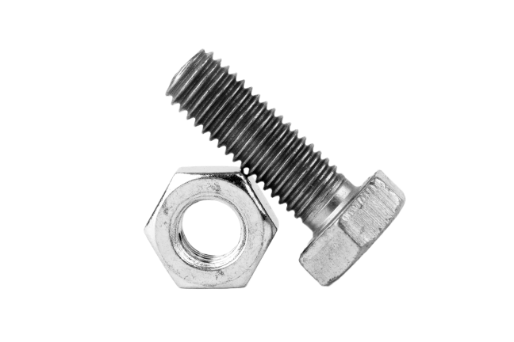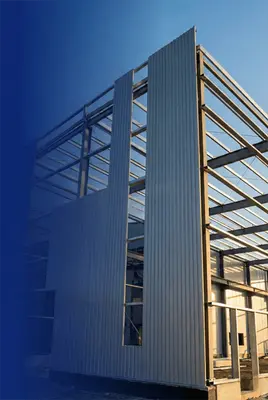
The process of roofing is full of dangers and potential hazards. From steep slopes to slippery surfaces, roofing tasks present a unique set of challenges that require the right protective measures. This article discusses the world of roofing fall protection, including the best roof safety techniques and equipment that helps ensure a safe working environment. We will discuss the best rope for roof work, the best roofing harness, and other key aspects of safety.
Understanding Fall Protection Safety Harnesses
A fall protection safety harness is a vital piece of personal protective equipment (PPE) designed to protect individuals working at heights from the risk of falling and sustaining serious injuries or fatalities.
Here's a detailed look at the components and functions of a fall protection safety harness:
Components
Straps
Typically crafted from sturdy materials like nylon or polyester, straps are worn around the body to cover the shoulders, chest, waist, and legs. They provide practical support and help ensure a secure fit.
Buckles and Adjusters
Buckles and adjusters allow the harness to be customized to fit the individual wearer's body size and shape, to help ensure comfort and safety.
D-Rings
Often located at the back (between the shoulder blades) and sometimes at other locations, D-rings are attachment points for connecting the harness to a lanyard or other fall arrest systems.
Lanyard or Lifeline
A lanyard or lifeline connects the harness to a secure anchor point. In the event of a fall, it helps arrest the fall, and works in conjunction with the harness.
Attachment Points for Tools
Some harnesses also have attachment points for tools, to make it easier for the wearer to carry necessary tools while working at heights.
Function
Fall Arrest
The primary function of a fall protection safety harness is to catch a worker if they fall, and arrest the fall to minimize injury. This is achieved through a combination of the harness's straps and the connecting lanyard or lifeline, which is attached to a secure anchor point.
Force Distribution
In the event of a fall, the safety harness distributes the force across the entire body, to help reduce the risk of serious injury to any specific part.
Mobility and Comfort
Modern safety harnesses are designed to allow freedom of movement while also providing the necessary support and security. Proper fitting and adjustment help to ensure that the wearer can move comfortably without compromising safety.
Connection to Secure Anchor Point
The harness is connected to a secure anchor point, often part of the building or structure where the work is being carried out. The anchor point must be capable of supporting the force exerted if a fall occurs.
Rescue Facilitation
If a fall does occur, the harness also facilitates rescue operations, as the worker will be suspended, to allow for a safer and more accessible rescue.
In various industries, especially construction, roofing, and maintenance, fall protection safety harnesses are essential for worker safety. Proper training in the use, inspection, and maintenance of the harnesses is also crucial, as improper use or a faulty harness can lead to catastrophic failure. Regulations and standards, such as those set by OSHA in the U.S., guide the proper selection and use of fall protection safety harnesses.
Selecting the Best Roofing Fall Protection
Selecting the best roofing harness requires consideration of several factors, including the type of roofing work, worker comfort, and safety features.
Material and Durability
The harness material should be sturdy and resistant to wear and tear. Fastener systems Inc. provides harnesses made of high-quality materials that meet industry standards.
Comfort and Fit
The best roofing harness will have adjustable straps and padding to fit various body types without hindering movement.
Attachments and Accessories
Consider harnesses with tool attachment points and other accessories that enhance functionality.
Certification and Standards
Always choose harnesses that meet or exceed regulatory requirements.
Preventing falls for roofers requires specialized equipment tailored to the unique demands of working at elevated heights on sloped surfaces. Harnesses and ropes must be carefully chosen to provide the best protection.
Best Types of Harnesses for Roofers:
Full-Body Harness with Fall Arrest System
A full body harness with fall arrest system provides complete protection and is designed to distribute the forces of a fall across the body, to help reduce injury. Look for features like padding for comfort and quick-release buckles for ease of use.
Work Positioning Harness
A work positioning harness allows the roofer to work hands-free in a supported position. It should be adjustable to fit snugly without restricting movement.
Cross-Chest Style Harness
Offering additional support, the cross-chest style harness may be suitable for roofers working on particularly steep or slippery surfaces.
Best Types of Rope for Roofers:
Kernmantle Rope
Kernmantle rope is designed with a protective sheath around the core, to provide both strength and flexibility. It’s resistant to abrasion, which makes it suitable for roofing applications.
Static Rope
Unlike dynamic climbing ropes, static ropes do not stretch under load. This is essential for fall arrest systems where minimizing fall distance is crucial.
Polyester Rope
Polyester rope is known for its resistance to UV rays and moisture, both of which can be common on roofs. It’s a solid choice for durability and reliability.
Rope with a Safety Line
Some ropes come with integrated safety lines that offer additional fall protection. This feature can be beneficial for roofers working at extreme heights or challenging angles.
Additional Considerations:
Compliance with Standards
Ensure that both the harness and the rope meet or exceed the relevant safety standards such as ANSI, OSHA, or other local regulations.
Professional Training
Proper usage of tools is as crucial as their selection. Roofers must be trained to use them correctly.
Regular Inspection
The harness and rope must be inspected regularly for wear, damage, or other signs of degradation.
When choosing harnesses or ropes to prevent falls for roofers, it’s important to prioritize safety, functionality, durability, and comfort. Understand the specific roofing requirements and consult safety professionals for the best equipment choices.
Best Practices for Roofing Safety
Ensuring roofing safety is crucial, and following best practices is vital to protect workers from falls and other potential hazards. Here are some practical tips to enhance roofing safety:
Proper Training
Ensure that all workers are trained on how to use safety equipment correctly and understand the hazards associated with roofing. Regular refresher courses should also be part of the safety training routine.
Use of Appropriate Personal Protective Equipment (PPE)
Utilize the best roofing harnesses, gloves, safety glasses, and proper footwear. Selection and use of equipment must comply with regulatory standards.
Fall Protection Systems
Implement fall protection systems like guardrails, safety nets, or personal fall arrest systems that can save lives. Fall protection systems must be carefully selected and maintained.
Regular Inspections
Inspect tools, equipment, and the worksite daily to identify and rectify any potential safety hazards. Include a checklist for harnesses, ladders, scaffolds, and other key tools.
Ladder Safety
Use ladders that are in good condition and always follow proper ladder safety practices. Secure ladders properly and ensure they extend at least three feet beyond the landing surface.
Scaffold Safety
Scaffolds must be erected and inspected by a competent person and must include guardrails.
Promote Safety Culture
Promote a workplace culture that emphasizes safety as a shared responsibility, that empowers workers to voice any safety concerns with confidence.
By investing time and resources into these best practices, roofing companies can significantly reduce the risks associated with roofing work. It's not just about compliance with laws and regulations; it's about creating a work environment where safety is a fundamental part of the job.
Shop the Best Roofing Safety Harnesses at Fastener Systems Inc.
Looking for a reliable safety harness? Look no further than FSI! We offer a wide range of safety harnesses from the Miller Company to meet your needs. Our harnesses provide different levels of protection, to help ensure a perfect fit for your workplace requirements. Check out our catalog for a complete selection of safety equipment.
For more information and to get the protection you need, reach out to our team. Don't wait, contact us today!

